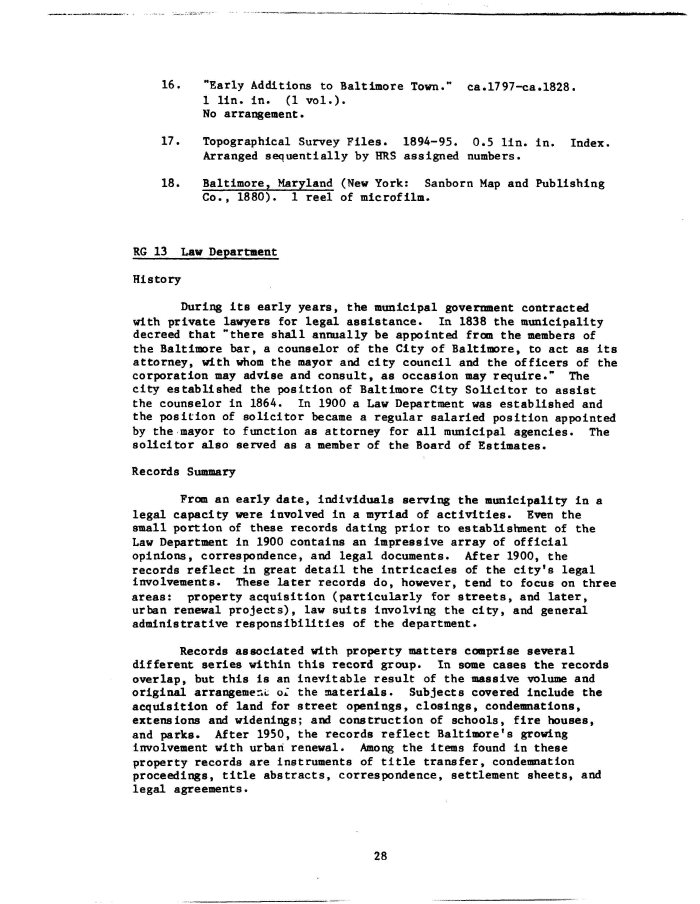|
16. "Early Additions to Baltimore Town." ca.1797-ca.1828.
1 lin. in. (1 vol.).
No arrangement.
17. Topographical Survey Files. 1894-95. 0.5 lin. in. Index.
Arranged sequentially by HRS assigned numbers.
18. Baltimore, Maryland (New York: Sanborn Map and Publishing
Co., 1880). 1 reel of microfilm.
RG 13 Law Department
History
During its early years, the municipal government contracted
with private lawyers for legal assistance. In 1838 the municipality
decreed that "there shall annually be appointed from the members of
the Baltimore bar, a counselor of the City of Baltimore, to act as its
attorney, with whom the mayor and city council and the officers of the
corporation may advise and consult, as occasion may require." The
city established the position of Baltimore City Solicitor to assist
the counselor in 1864. In 1900 a Law Department was established and
the position of solicitor became a regular salaried position appointed
by the mayor to function as attorney for all municipal agencies. The
solicitor also served as a member of the Board of Estimates.
Records Summary
From an early date, individuals serving the municipality in a
legal capacity were Involved in a myriad of activities. Even the
small portion of these records dating prior to establishment of the
Law Department in 1900 contains an impressive array of official
opinions, correspondence, and legal documents. After 1900, the
records reflect in great detail the intricacies of the city's legal
involvements. These later records do, however, tend to focus on three
areas: property acquisition (particularly for streets, and later,
urban renewal projects), law suits involving the city, and general
administrative responsibilities of the department.
Records associated with property matters comprise several
different series within this record group. In some cases the records
overlap, but this is an inevitable result of the massive volume and
original arrangement oJ the materials. Subjects covered include the
acquisition of land for street openings, closings, condemnations,
extensions and widenings; and construction of schools, fire houses,
and parks. After 1950, the records reflect Baltimore's growing
Involvement with urban renewal. Among the items found in these
property records are instruments of title transfer, condemnation
proceedings, title abstracts, correspondence, settlement sheets, and
legal agreements.
28
|

